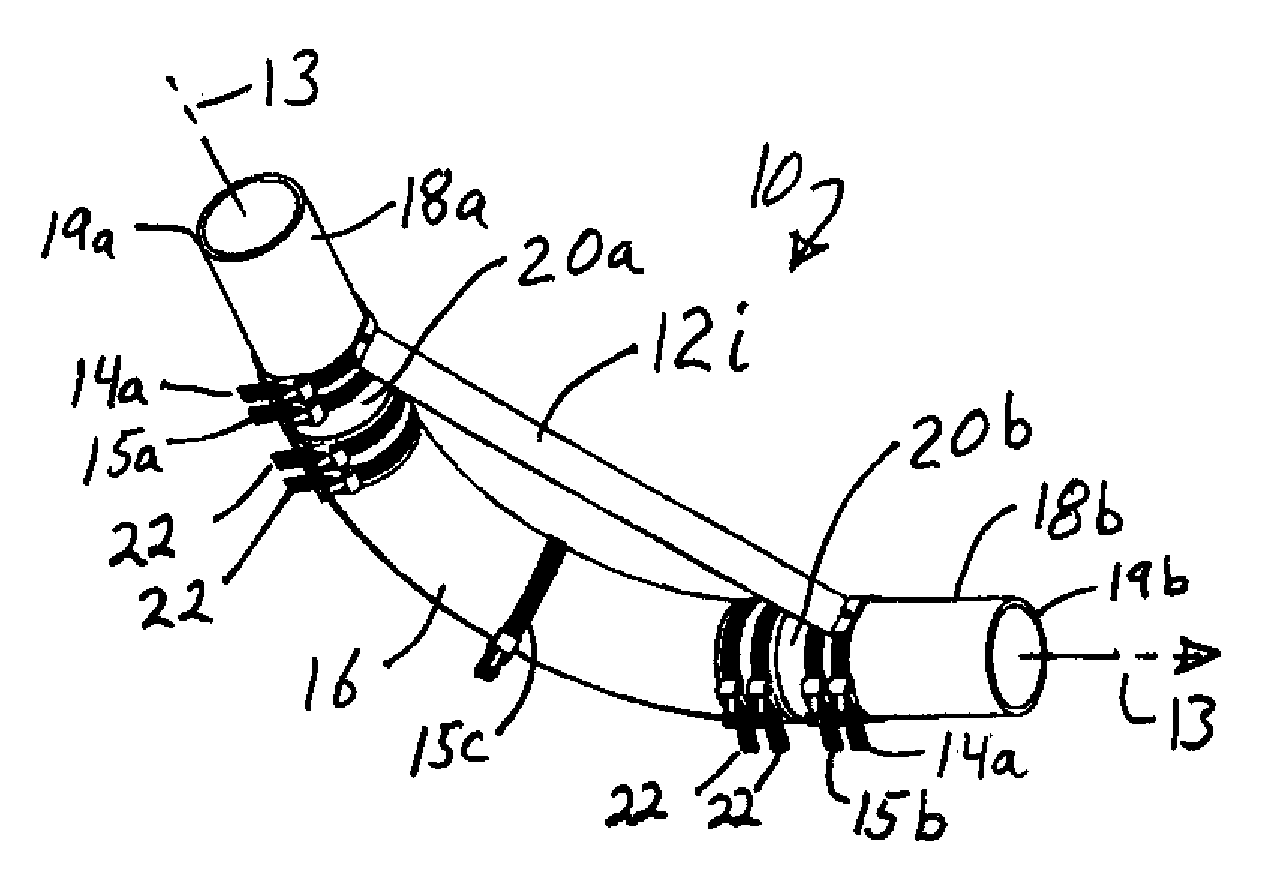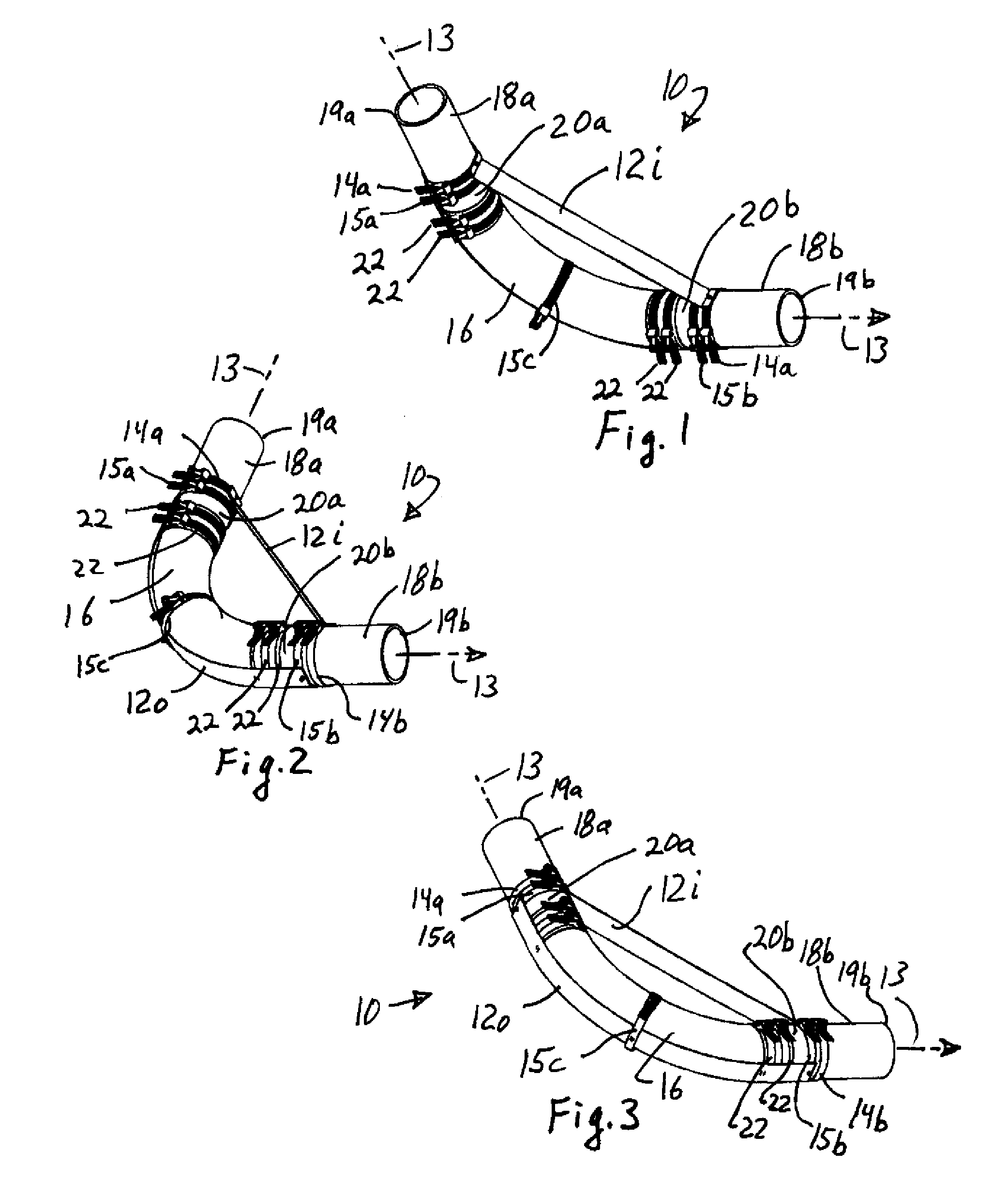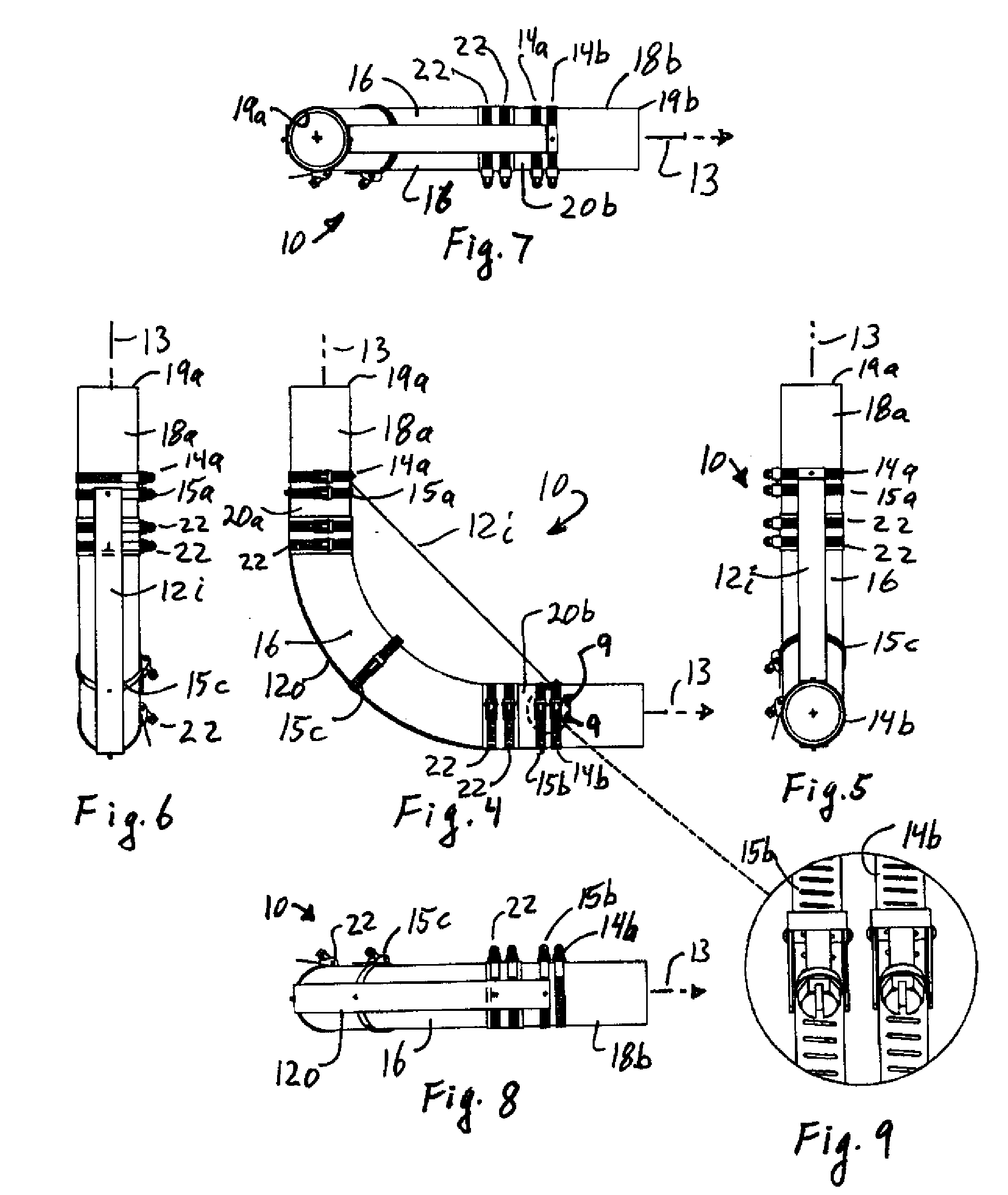Pipe joint restraint
a technology for reducing which is applied in the direction of sleeve/socket joints, fluid pressure sealed joints, bends, etc., can solve the problems of joint failure, leakage and property damage, and the tendency of joints and fittings to move, so as to reduce the tilting or canting of the joined parts, and the relative movement or tilting of the joined parts.
- Summary
- Abstract
- Description
- Claims
- Application Information
AI Technical Summary
Benefits of technology
Problems solved by technology
Method used
Image
Examples
Embodiment Construction
[0075]Referring to FIGS. 1-9 and 11-12, a pipe restraint 10 is shown having elongated inner and outer straps 12i and 12o, respectively. Pipe connector 14a, 14b are fastened to opposing ends of inner strap 12i, and pipe connectors 15a, 15b are fastened at opposing ends of the outer strap 12o. An additional pipe connector 15c can be fastened to the outer strap 12o intermediate the ends of the strap as shown in FIG. 1. The pipe restraint 10 helps prevent a pipe joint from coming apart under high fluid flows through the pipe along flow path 13 through the pipe, or under high internal pressures in the pipe.
[0076]A typical pipe joint includes a curved pipe section 16, such as an elbow section having a 45° or a 90° curve, with opposing ends 17a, 17b (FIG. 20). The typical joint further has a first upstream pipe section 18a and a second downstream pipe section 18b on opposing ends of curved pipe section 16. Each pipe section 18a, 18b has a first upstream end 19a and a second downstream end ...
PUM
 Login to View More
Login to View More Abstract
Description
Claims
Application Information
 Login to View More
Login to View More - R&D
- Intellectual Property
- Life Sciences
- Materials
- Tech Scout
- Unparalleled Data Quality
- Higher Quality Content
- 60% Fewer Hallucinations
Browse by: Latest US Patents, China's latest patents, Technical Efficacy Thesaurus, Application Domain, Technology Topic, Popular Technical Reports.
© 2025 PatSnap. All rights reserved.Legal|Privacy policy|Modern Slavery Act Transparency Statement|Sitemap|About US| Contact US: help@patsnap.com



